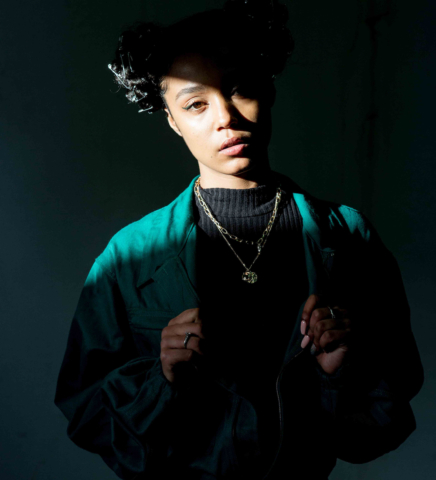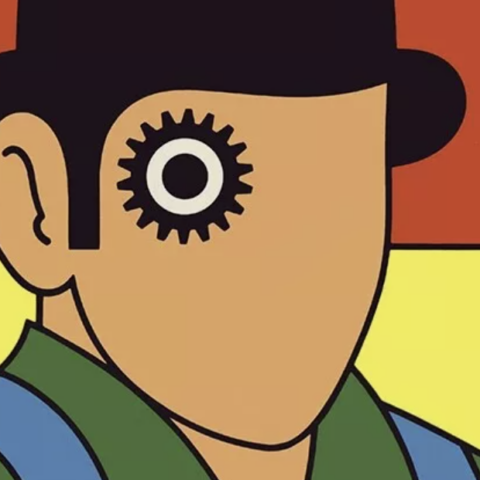CORE: Power of Photography
By Shannon Brien
Photographs have changed they way history is viewed and studied. They serve as a reminder of what has been and raise questions of what will be. Photojournalism has enhanced news, ensured it’s accuracy to a certain degree and has made it easier for us to connect. When taken correctly, an photograph provides an unbiased view into an issue.
The works of the most influential photographers have been compiled in Photography Visionaries by Mary Warner Marien, available April. From fashion photographers to photojournalists and the in-between, this book has bound the iconic photographic masterpieces of our time, like those of Annie Leibovitz and Henri Cartier-Bresson.
 Boy squats and strains to follow lesson in heat of packed classroom, House of Bondage, 1960-66, Ernest Cole Family Trust, Hasselblad Foundation.
Boy squats and strains to follow lesson in heat of packed classroom, House of Bondage, 1960-66, Ernest Cole Family Trust, Hasselblad Foundation.
Diversity of photography has allowed and encouraged the flow and adaption of ideas from one genre to another. Richard Avedon, famous fashion and portrait photographer changed the face of fashion photography by snapping models in obscure locations like the circus, nightclubs, back streets and varying landscapes in non-traditional action poses. In the 1960’s he turned his lens towards making studio portraits, capturing people involved in the civil rights campaign and politicians.
In 1985 he released In the American West, portraits of ordinary people in America’s west found at state fairs, rodeos, coal mines, slaughter houses and even prisons. His minimalistic styling of the subject along with the elimination of props and lighting effects allowed him to focus on emotions and essentially capture aspects of their personality that otherwise would’ve gone unnoticed.
 In The American West, Richard Avedon, Thames and Hudson, 1985
In The American West, Richard Avedon, Thames and Hudson, 1985
Magnum co-founder, Henri Cartier-Bresson was a painter turned photographer, his technique of getting inside human emotion and action helped him in capturing the eruption of a situation, evident in his films and photographs of the Spanish Civil War and WWII. He co-created Magnum with the intention of allowing photojournalists creative control.
 ‘Staff riders’ on a train leaving Soweto, 1970s. Dr. Peter Magubane
‘Staff riders’ on a train leaving Soweto, 1970s. Dr. Peter Magubane
For Marien the core of photography is ability; the ability to adapt with changing times and technology and the ability to accept those changes. She says that “in an era when people bump into each other on the street while texting and sending photographs, it seems to me that photography has become ‘a core need'”. Smart phones have expanded photographic practice in the 21st century and created a new popular art, anyone has the power to capture images of breaking events and provide them to media outlets. Photography Visionaries serves as a reference book, “I envision this as …a volume to pick up, look at, read a bit, and then come back to at another time”.
Photography is a medium thats captures the world’s appearance, probing the surface and creating new identities, Human Rights Human Wrongs, at The Photographers’ Gallery until April 6, is an exhibition showcasing 200 original press prints from the end of WWII to the early 90s, examining social issues such as war, conflict, racism and political upheaval. These powerful images are made iconic due to their constant re-interpretation and appreciation.
World Press Photo is built on the premise that visual journalism has the power to inspire and shape society.For over 55 years, they have ensured the highest level of photojournalism through their annual photography contest. The outstanding applicants of 2014 are showcased in World Press Photo 15 by Kari Lundelin, published by Thames & Hudson on 25th May.
 Jon and Alex, a gay couple, during an intimate moment.Mads Nissen, Denmark, Scanpix/Panos Pictures
Jon and Alex, a gay couple, during an intimate moment.Mads Nissen, Denmark, Scanpix/Panos Pictures
Beginning 18 April in Amsterdam, the exhibition will travel to 100 cities in 45 countries around the world to increase public interest in photojournalism and provide them with a deeper understanding of why photographs are vital to the exchange of information.
 A protester calls for medical aid for a comrade shot dead. Jérôme Sessini, France, Magnum Photos for De Standaard.
A protester calls for medical aid for a comrade shot dead. Jérôme Sessini, France, Magnum Photos for De Standaard.
If journalism is describing society to itself, then photojournalism shows society to itself, as it is and as it can be.





